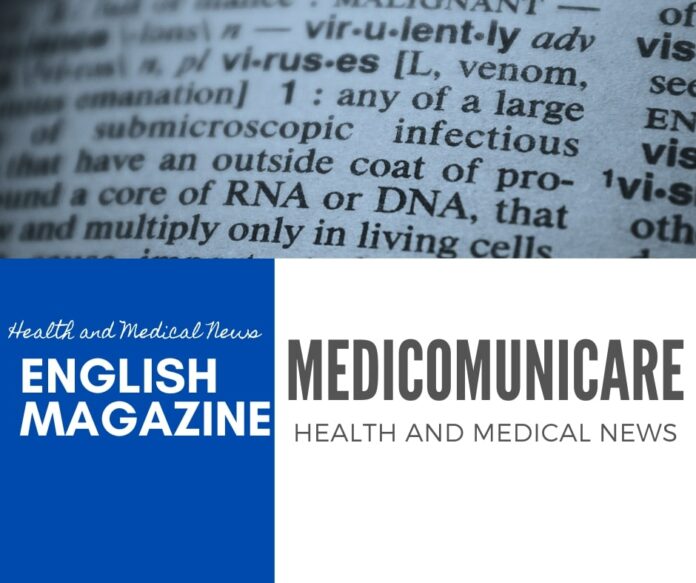Muscle injury and frailty
Although older adults participate relatively less in strenuous physical activities, they are prone to mechanical muscle injuries during their routine exercise and mobility programs or normal daily activities. Muscle contusions, colloquially known as “bruised muscles,” are the most common injuries associated with collisions and falls in older adults. Characterized by pain and swelling that accompany blunt force trauma to muscle fibers and connective tissue, the condition has historically received little geriatric attention due to the latter’s focus on fall-related fractures. Unfortunately, even in the absence of fractures, falls and similar impacts can cause muscle contusions that can leave older adults with weeks or even months of pain and debilitation. Recent research has clarified the duration of muscle healing (ranging from a few to several weeks) in younger adults.
Despite the lack of similar evidence in older adults, the effects of aging mechanisms in other organ systems, along with previous experiments in rat models conducted by the current research team, suggest that healing time is prolonged in older cohorts. Conventional treatment for contusions involves the use of NSAIDs, primarily for their pain-relieving properties. Unfortunately, the muscle-restoring effects of NSAIDs have never been clinically validated, with some experts suggesting that the interventions may have counterproductive effects. Dietary supplements such as fish oils have shown considerable promise in reversing the effects of aging, with significant benefits related to their anti-inflammatory and antioxidant properties. While their usefulness in muscle repair remains untested, previous studies have suggested their potential to improve muscle health.
What omega-3s do in injured muscle
When a muscle is damaged (eccentric exercise, trauma, immobilization), the normal sequence is: acute inflammation → debris removal → resolution → fiber reconstruction via satellite cells. EPA/DHA intake plays a role in at least three key areas: (1) it modulates the membrane lipid profile and eicosanoid production, (2) it fuels the biosynthesis of pro-resolving mediators (SPMs: resolvins, protectins, maresins) that actively “switch off” inflammation, (3) it enhances the anabolic pathways and myogenesis necessary for repair. Together, these effects tend to reduce pain/DOMS and damage markers, limit disuse atrophy, and support fiber regeneration.
Molecular mechanisms
EPA/DHA incorporate into the phospholipids of the sarcolemma and leukocytes, displacing arachidonic acid (Ara). This displacement reduces the synthesis of prostaglandins/leukotrienes derived from it (series 2/4, more pro-inflammatory) and favors series 3/5 prostanoids/leukotrienes (tend to be less potent), as well as generating precursors (18-HEPE, 17-HDHA) for resolvins. Associated effects include: reduced leukocyte chemotaxis/adhesion, reduced release of inflammatory and pain-amplifying cytokines (e.g., TNF-α, IL-6), and possible reorganization of membrane microdomains (“lipid rafts”) that influence insulin signaling and other growth factors (EGF, PDGF, and others).
Resolving biolipids from EPA/DHA (e.g., RvE1, RvD1, RvD2, maresin-1) are not “suppressive” anti-inflammatories: they accelerate physiological resolution. In muscle damage models, RvD1 limits the duration and intensity of inflammation, increases the growth of regenerating myotubes, and improves strength recovery. RvD2, in addition to “shifting” macrophages toward a pro-repair phenotype, acts directly on myogenic cells via the GPR18 receptor, activating protein kinase c-Akt and promoting differentiation/fusion. Omega-3 enrichment can reduce the release of mitochondrial oxidants and facilitate the anabolic response to exercise, creating a microenvironment more favorable to repair.
In elderly adults, 8 weeks of 4 g/day (≈1.86 g EPA + 1.5 g DHA) increased the anabolic response (myofibrillar protein synthesis) to insulin + amino acids, with increased phosphorylation of mTOR and p70S6K, which activate cellular protein synthesis. This results in a “recoupling” of post-meal anabolism, useful for both repair and counteracting mass loss. Finally, in addition to the indirect effect via macrophages, data suggest that omega-3s modulate genes and pathways involved in satellite cell activation and differentiation. In vitro, RvD2 promotes expansion and differentiation of myogenic progenitors. The modulation of protein synthesis, as mentioned above, could contribute to satellite cell reawakening and their commitment to differentiation into mature muscle fibers.
What do in vitro, in vivo, and clinical studies say?
Previous randomized clinical trials (e.g., 1.8 g/day for 7–8 weeks) show pain relief at 48 hours post-eccentric; in endurance athletes, 10 weeks of 2.1 g/day DHA + 0.24 g/day EPA reduced IL-1β/IL-6, plasma CK and pain, without improving strength deficits; recent meta-analyses confirm a moderate but inconsistent effect (depending on dose, duration, population, and type of exercise). In young women, n-3 supplementation attenuated mass loss during immobilization (mediated by increased myofibrillar protein synthesis), although the results are not universal. In older adults, n-3 supplements increase anabolic sensitivity to insulin + amino acids, plausibly translating into improved mass maintenance/recovery in the medium term.
In a study published in 2024 in the journal Nutrients, researchers conducted in vitro (mouse C2C12 myoblast cells) and in vivo (using aged (22-month-old) and adult (8-month-old) Sprague Dawley rats) experiments to investigate the potential benefits of fish oil supplements on muscle healing. Results revealed that aging significantly prolonged recovery periods in rat model systems, with older rats demonstrating significantly slower recovery than their younger counterparts. Specifically, fish oil supplementation (containing 45% EPA) and 10% DHA (incorporated into the diet at a concentration of 33 g/kg) was shown to help attenuate the repair-delaying effects of aging, with 78% of the fish oil-supplemented older rats demonstrating muscle healing rates comparable to their younger counterparts.
In adult rats, a 20–25% reduction in muscle contractility occurred 7 days after injury, while in aged control rats, a 30–40% reduction was observed. Results from in vitro experiments on murine cell lines confirmed these findings and suggested that fish oil may enhance membrane resealing and repair, thus helping to accelerate healing. This study highlights the muscle-healing potential of fish oil supplements, which have been observed to accelerate muscle recovery both in aged rat models in vivo and in C2C12 cells in vitro. The data suggest that omega-3s may promote recovery from mechanical injury by enhancing membrane repair processes, involving key proteins such as dysferlin and TRIM72/MG53. The molecular mechanisms have not been studied in detail, but the anti-inflammatory action of omega-3s cannot be ruled out.
Muscle cells are exposed to regular mechanical injury during contraction and therefore require a rapid and robust process to maintain the integrity of the sarcolemmal membrane and cellular homeostasis. Key proteins involved in this repair process include dysferlin and TRIM72/MG53, whose inhibition can increase muscle degeneration and, in turn, fibrosis, thus compromising or slowing recovery. Similarly, proteins involved in the integrity of the sarcolemmal reticulum, such as Grp78, are involved. The study results further confirmed age-associated declines in the speed of muscle recovery in rats, but also encouraged the protective effects of fish oil supplements in attenuating these declines. These findings are not the only ones published by the group: the team has been working on this problem since 2015, when they had already discovered alterations in sphingolipid metabolism and the cellular autophagy process.
How to interpret (mechanism-based practice)
EPA and DHA prepare the groundwork: they change the local “lipid language” (fewer pro-inflammatory mediators from Ara, more resolving biolipids), favoring a rapid transition to the resolution phase and the initiation of myogenesis. In parallel, they increase the anabolic efficiency of the muscle at mealtimes or during rehabilitation (mTOR/p70S6K), potentially useful in recovery, immobilization or advanced age. Perceived effects (less DOMS, lower markers) typically appear with weeks of intake and doses in the range of 1.5–4 g/day of EPA+DHA used in studies.
- edited by Dr. Gianfrancesco Cormaci, PhD, specialist in Clinical Biochemistry.
Scientific references
Russ DW, Sehested C et al. Nutrients 2024; 16:3511.
Jannas-Vela S, Nutrients. 2023; 15(4):871.
Curr Opin Clin Nutr Metab Care. 2021; 24(2):114.
Ramos-Campo DJ et al. Nutrients 2020; 12:719.
Front Nutr. 2019; 6:144.
Russ DW et al. Exp Gerontol. 2018; 111:241–252.
Iolascon G et al. J. Nutr Health Aging 2017; 21:527.
Russ DW et al. Biogerontology 2015; 16:747–759.
Smith GI et al. Amer J Clin Nutr 2011; 93:402–12.
Tartibian B et al. Clin J Sport Med 2009; 19:115–119.

